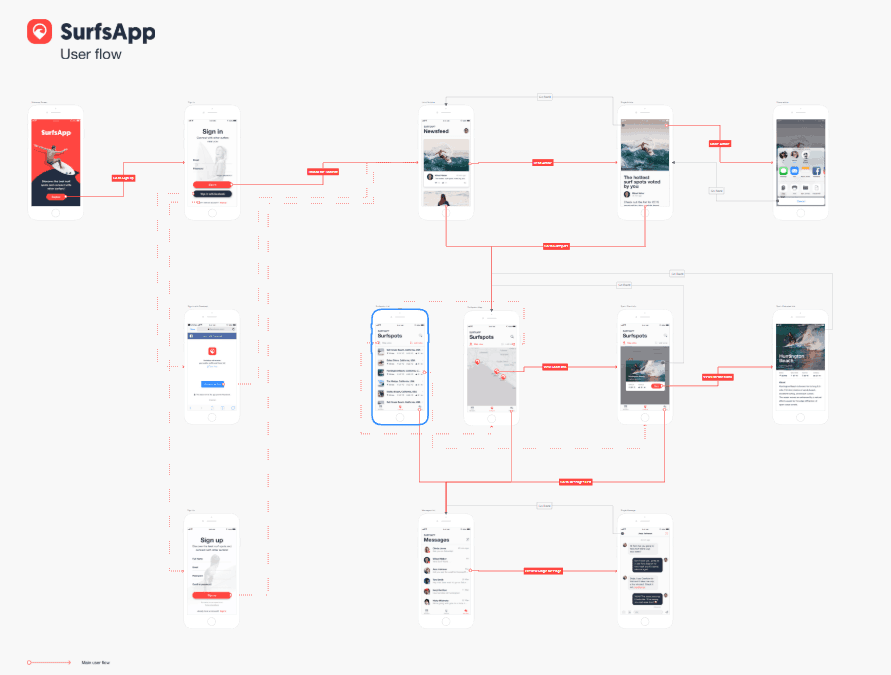Apps don’t have to directly drive revenue to be worthwhile investments. Although successful paid apps get a lot of press, most developers aren’t building mobile software to monetize downloads. In fact, over 94% of apps in the Google Play store and more than 90% of iOS apps are free to install. Some of these apps do generate revenue through other models, such as in-app purchases, but some of the greatest success stories of the mobile era are apps that never made a penny.
Here’s how to design an app to earn coverage and engagement, enhance customer experience, and promote your business.
Mobile Business Promotion Apps
Like any app, a mobile business app has to provide enough value in two ways: to incentivize customers to use it and for your company to justify the cost of building and promoting it.

It’s relatively easy to convince your customers to go to your website, but they’re probably not going to want to install your app — even for free. Unless, of course, you can provide something more than a few minutes of diversion. It’s okay to think of your app as an advertisement for your company, but if you’re asking for a signup and a download, it has to go beyond what traditional advertisements supply.
Nike’s SNKRS app is a great case study in how to build an app that serves your customers and your company. Nike offers a line of high-end, limited-edition shoes designed for serious sneakerheads. However, a few years ago they were having issues with resellers, who would use scripts to buy up all the shoes as soon as they were released.
It sounds like a good problem to have — who doesn’t want their stock to sell out in seconds? — but it was hurting the brand by depriving buyers of access. Nike didn’t need any help selling product, they needed a way to provide a high-end, branded experience to their most dedicated fans.
To solve the problem, Nike built SNKRS, an augmented reality app that provided a completely different buying experience. Not only did it shut down the scripts, it also provided a live, interactive experience for Nike’s elite customers.
For one release designed in collaboration with a celebrity chef, buyers had to unlock the app by pointing it at the menu of New York restaurant, David Chang’s Fuku, a Nike poster, or a web version of the menu. Another time, users had to hunt for stickers in Nike’s Manhattan studio in order to purchase a hyped sneaker, The Ten: Air Force 1 Low. In Chicago, the experience was even trickier for buyers, requiring them to hunt for a particular location based on a vague image before they could purchase the shoes.
When you think of how to provide value with a retail app, SNKRS isn’t the first thing that would come to mind. After all, online buyers typically want the fastest and easiest experience possible. SNKRS does the opposite — it makes it much harder and more time-consuming to buy. But what makes it valuable for Nike users is that it provides them with an added experience tailored to the brand’s image.
You might not have the marketing budget or fanatical brand loyalty of Nike, but SNKRS is still a fantastic example of how to design an app for business promotion. By understanding their customers and providing them with a targeted experience, Nike showed their fans they valued them — all the while earning media coverage and brand cache. That’s exactly what any business promotion app should aim to do.

How to Design an App — Brainstorming
Just like Nike, your company needs to understand who your customers are and what they want in an app. That’s no easy task. Users have short attention spans and almost unlimited options these days, so you need to build something with just the right features and design for your market. Here are a few questions to get you started:
- Why are you building the app? Obviously, you want to promote your business, but what exactly does that mean? Are you trying to create brand loyalty among existing customers, or attract new ones? Are you interested in generating more traffic to your site, or boosting conversions?
Are there new products you’re releasing or segments you want to target? Think about data as well. Getting customers to sign up or share information can be valuable to your company in its own right. - Who are you trying to appeal to? “Customers” isn’t an accurate enough answer. You need to think about exactly who you want to attract. Your buyer profile is a good place to start, but your typical buyer and your typical user may not be identical. Think about demographics like their age, gender, education level and income. List your users’ hobbies and preferences, especially when it comes to technology.
Research your competitors to find out if they’re offering apps. If so, how do those apps perform? Are they gaining media coverage or earning a lot of downloads? What features or design characteristics make their apps successful (or unsuccessful)?

- What is my brand identity? SNKRS was a great app for Nike, but it would be a complete flop for a budget brand. To be successful, you need to think about how users perceive your brand, and what image you portray to the public at large. Are you seen as traditional or cutting edge? Quirky or conservative? A luxury brand, budget, or something in between?
Try listing a few adjectives you’d use to describe your brand. This simple activity can help you think through exactly who you are, and what you want to communicate to your customers. - What value can my app provide to my users? Your app doesn’t necessarily need to be complex, but it does need to give users something that they’ll value.
Anything that can make your product or service more valuable or enjoyable for your customers is a good candidate. For example, if you run a gym, you might create an app with a fitness tracker, a class schedule, a system to sign up with personal trainers or some other fitness-related functionality.
However, your app doesn’t necessarily have to support your product — provided it supports your customers and their lifestyle. For example, if your business is a local wilderness outfitter, you could create an app that provides outdoor safety tips, informs users about local hiking spots or outdoor sporting events, or connects them to resources on outdoor recreation. As long as your customers value it and it fits with your branding, the app is promoting your company.
From Brainstorming to Prototyping
Having too many ideas is a good problem to have, but it’s still a problem. Building a polished, commercial-quality app can be costly, and every feature you add will up the price tag. Your goal should be to separate the features that are most valuable to customers from the bells and whistles that the app doesn’t really need.
Once you’ve settled on your core features, it’s time to start wireframing. A wireframe is a sketch or blueprint of your app showing how features are laid out screen by screen. Those wireframes are connected by user actions. The sequence of actions a user takes to perform a task is called user flow.
This diagram for SurfsApp, built in Overflow.io, is a great example of what user flow looks like. The user starts on the Welcome Screen, which has one button: Explore. That button takes new users to the Sign In screen, which has three options. New users can choose Sign in with Facebook or Sign Up depending on how they wish to access the app. Registered users click the Sign In button and go to the List of Articles screen.

When user flow is well-designed, it’s essentially ignored (as in, users only notice terrible flow because it’s poorly done). Finding the right button or gesture to perform an action becomes second nature. But behind the scenes, things are surprisingly complex. SurfsApp uses a very conventional user flow for authentication, but the designers had to create five different screens to get from the Welcome Screen to the List of Articles. And all the user has done so far is sign in!
Nailing down user flow will help you understand how your app fits together. It will also let you ensure your UX is simple and intuitive — and help prepare you to build a working prototype.
It’s certainly possible to go straight from wireframing to coding, but you’re better off building a working mobile app prototype first. With Proto.io, you can quickly build a usable prototype that’s virtually indistinguishable from the finished product, without the need to code.
Prototyping lets you test, refine, and perfect your design before you build the app, greatly reducing the risk of serious bugs or glitches in the finished product. It will also make it easier to communicate exactly what you want to your development team.
Choosing a Team to Build your Mobile App
The mobile development world is complex and esoteric. As an outsider, it can be difficult to choose the right team. You can do it — but you need to take the time to assess each candidate in depth. Look at their portfolios and try out some of the apps they’ve built. Ask how long it took to build, how responsive the team was, and what challenges they faced during the development process.
Do they load quickly and run smoothly? Are they attractive and intuitive to use? Does the team have experience building apps that have similar use cases to yours?
Even if the final product is good, poor communication, missed deadlines and other project management issues can get in the way of marketing your app, making it less valuable for you and your users.
Finally, consider the need for ongoing support. You’ll probably want to release future updates to keep users engaged, and (despite prototyping) you may have one or two bugs to fix post-release. Choose a team that can stick with you throughout your product’s life cycle.
How to Promote Your App
Apps rarely sell themselves. In a crowded field, with the sheer number of apps out there, it’s very hard to get noticed unless you have a well-designed mobile app marketing and promotion strategy.
Your app promotion campaign should focus on building anticipation and awareness prior to release. Send out press releases to industry outlets. If you have innovative new features, demo them to tech journalists. If you’re a local business, reach out to social media groups and publications that serve your area.

You need to be careful about how you target customers in order to inform them without nagging them. Intersperse a few blog posts about your upcoming app with other more general interest posts. If you have a newsletter, you may want to mention the app briefly a few times leading up to the release, then send out a more in-depth announcement a few days before it’s available.
Make sure your messaging is focused on the user. Even though you’re not selling the app, it’s still a product and it will only succeed if users understand how it can help them. It’s okay to tell the public that you made the app because you value your customers, but don’t lay it on too thick. If the app really is useful, that message will come through on its own.
Keep Innovating!
Building and marketing your app is just the first stage of the journey. Your app will provide great publicity for you as long as it continues to provide value to your users.
But don’t stop there — keep listening to your users and be receptive to the feedback that they share with you. Just because your app is on the market doesn’t mean that it can’t change — or that you have to stop there. There’s always room for additional innovation!
Proto.io lets anyone build mobile app prototypes that feel real. No coding or design skills required. Bring your ideas to life quickly! Sign up for a free 15-day trial of Proto.io today and get started on your next mobile app design.
Have any great tips for building and promoting your app? Let us know by tweeting us @Protoio!






